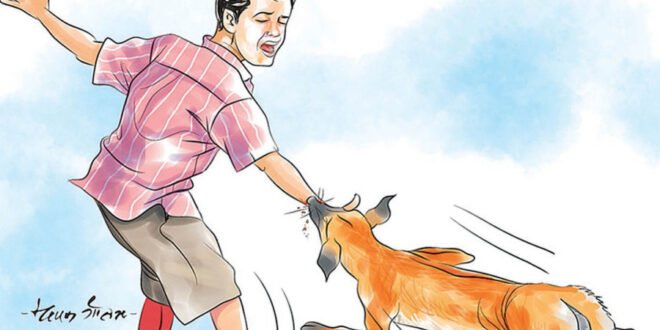Rabies Outbreak Sparks Concern in Remote Nepalese Villages
In a recent development, three individuals have lost their lives due to rabies infection in two remote villages—Chotesh and Bunpung—located in ward 6 of Benighat Rorang Rural Municipality, Dhading district. Hundreds of residents from these areas are believed to have come into close contact with infected dogs, raising fears of a potential outbreak of the deadly virus.
The situation has alarmed local officials, as the three deaths occurred within a span of just one and a half months. This has prompted immediate action to prevent further spread of the disease. Dr. Chandra Bhal Jha, director at the Epidemiology and Disease Control Division, confirmed that a mass vaccination campaign has already been initiated in the affected villages. Over 300 people have received the anti-rabies vaccine, with more vaccinations still ongoing.
Rabies is a severe viral disease transmitted through the saliva of infected animals, primarily dogs and jackals. The virus spreads when an infected animal bites another, making dog bites the primary cause of rabies-related deaths in Nepal. While the disease is entirely preventable if the anti-rabies vaccine is administered promptly, it becomes fatal once symptoms appear. This makes timely intervention crucial in preventing loss of life.
Health workers have been deployed to the affected villages for mass vaccination efforts. Two recent victims—a 52-year-old man and an 82-year-old woman—were taken to basic health service centers after showing symptoms of rabies. They were then referred to Sukraraj Tropical and Infectious Hospital in Kathmandu for further treatment. However, both patients died shortly after returning to their local health facilities, with their bodies being cremated directly from the hospital.
Interestingly, neither of the victims had recently been bitten by dogs or other animals, yet they succumbed to rabies, according to Toyanath Chhatkuli, a public health inspector at the Health Office. This highlights the unpredictable nature of the disease and the urgency of preventive measures.
Chotesh and Bunpung are remote settlements inhabited by the Chepang community, surrounded by dense jungles. According to health officials, residents often feed dogs on their plates and even sleep alongside them, increasing the risk of exposure to the virus.
Nepal has set a goal to eliminate dog-transmitted rabies by 2030, aligning with the World Health Organisation’s target. However, data from the Health Ministry indicates that dog-bite cases have been on the rise annually. In the fiscal year 2021-22 alone, over 56,000 people sought anti-rabies vaccination at state-run health facilities. Additional cases are estimated to occur in private healthcare centers.
Despite this, the country records only around two dozen rabies-related deaths per year, according to official records. Doctors suggest that many cases go unreported, as not all victims seek medical attention. This lack of accurate data poses a significant challenge in combating the disease and achieving the 2030 elimination target.
Another major obstacle is the limited awareness and availability of treatment. Many people in rural areas are unaware of the risks associated with rabies, and treatment options are often concentrated in major cities. This disparity leaves many vulnerable populations without access to essential care.
Children under 15 years old make up 40% of animal bite victims, particularly those from dog bites. Doctors note that children often hesitate to inform their parents about such incidents due to fear of scolding or the discomfort of injections. Parents, too, may downplay the severity of the situation, sometimes believing that pet dogs do not require vaccination.
Globally, rabies causes approximately 59,000 deaths each year, according to the World Health Organisation. These fatalities occur mostly among children and the poor, with one death occurring every nine minutes. Despite its high fatality rate, rabies is entirely preventable through timely vaccination and access to treatment following a dog bite. Addressing the gaps in awareness, reporting, and access to care remains critical in the fight against this preventable disease.
 Info Malang Raya Its All About World News
Info Malang Raya Its All About World News




